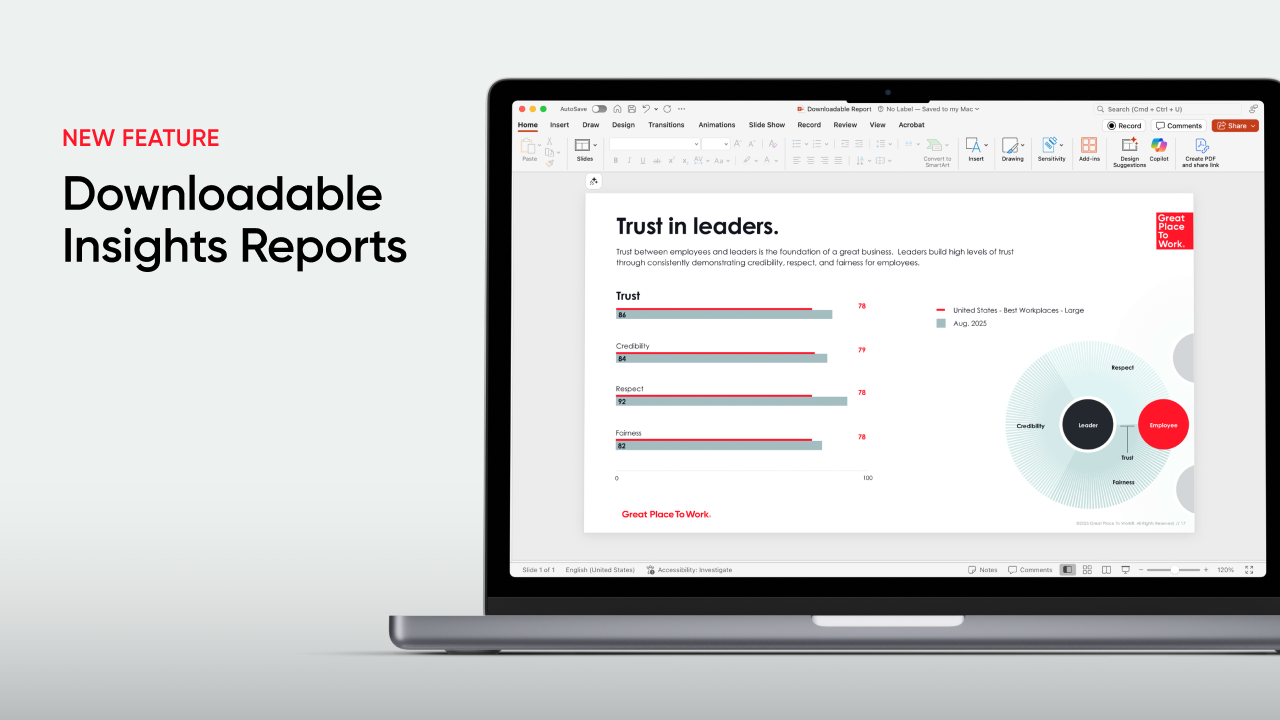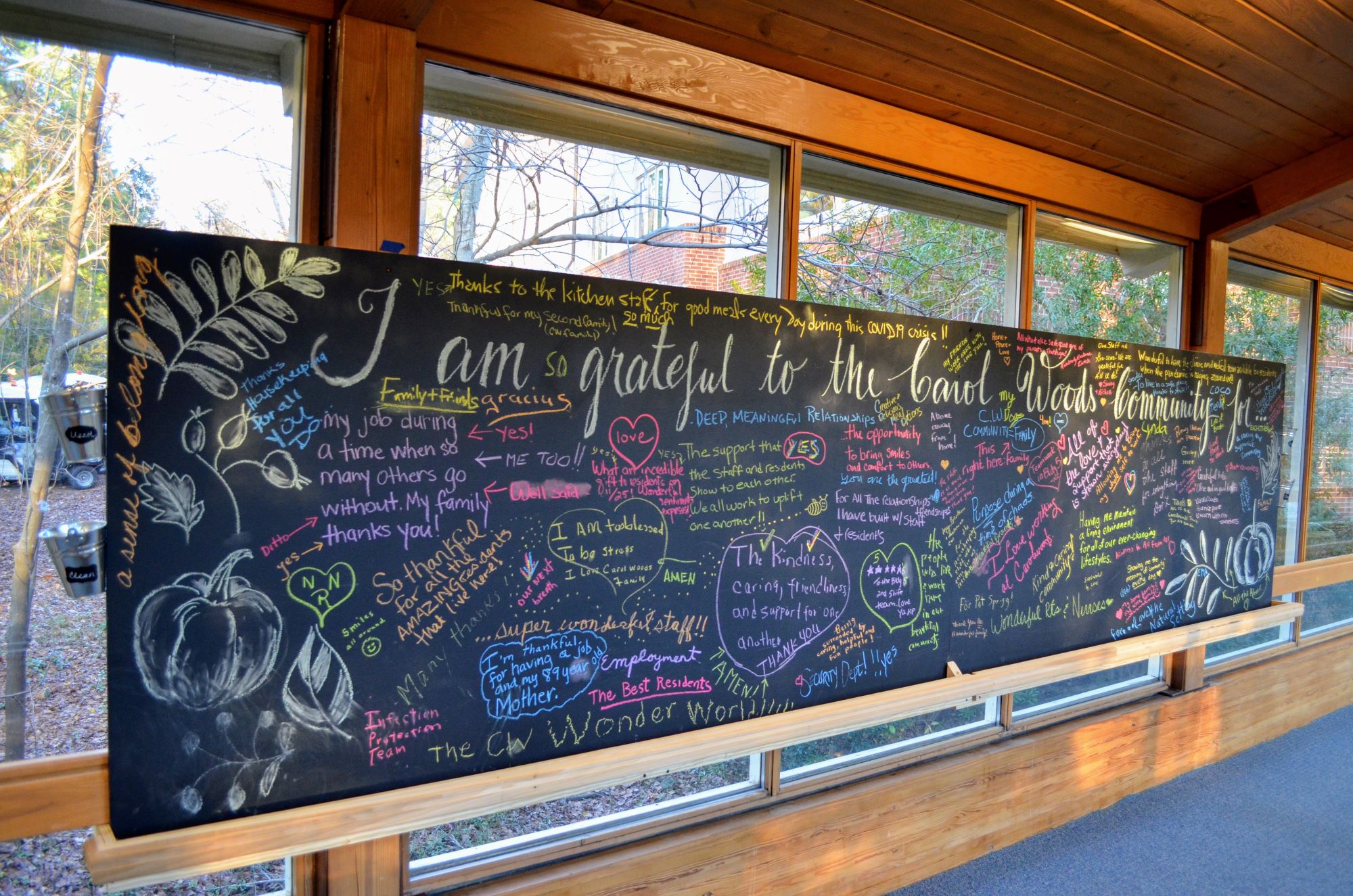Employee Engagement, Employee Well-being
Clinical psychologist and author Dan Pelton shares how you can build a system that supports employees amid turbulent times.
Business leaders are increasingly focused on resilience, future-proofing their infrastructure and their teams from a wave of AI disruption.
For companies trying to innovate, resilience is an essential resource. McKinsey found that teams with high levels of adaptability and resilience reported nearly four times higher innovation behaviors than their colleagues.
And companies desperately need everyone to participate in innovation. Great Place To Work research shows that when more employees feel they can easily innovate, revenue growth jumps 5.5 times higher.
You can hear the desperation in the messaging from leaders like Microsoft CEO Satya Nadella in a memo addressing workforce cuts and the company’s breakneck pursuit of AI dominance:
“It might feel messy at times, but transformation always is. Teams are reorganizing. Scopes are expanding. New opportunities are everywhere.”
Translation: Success will require teams to be much more resilient, because change is coming.
If resilience is becoming such a valuable trait in the workplace, are companies doing enough to foster this essential skill?
The value of workforce resilience
It’s unlikely that exhorting employees to “Be resilient!” will move the needle much.
Many workers likely face a resilience deficit, brought on by economic uncertainty, increased loneliness at work, and many other factors. Levels of well-being have sunk to pre-pandemic levels, as the market pressure to retain employees amid the Great Resignation has eased.
If leaders want to bolster resilience — and they should in the face of AI disruption — leaders will need to avoid some common mistakes about what builds resilience in the workplace.
“Workforce resilience isn’t about bouncing back individually, it’s about whether the workplace is designed to support that bounce,” says Dan Pelton, clinical psychologist and author of “Rethinking Employee Resilience: Why Our Current Approach to Workplace Burnout Is Failing and How to Fix It.”
Putting the burden of resilience on the individual? That only increases the rate of burnout. Look no further than a mindfulness app or well-being workshop. “It’s like giving someone a stress ball when their house is on fire,” Pelton says.
Engagement won’t protect you from burnout
Leaders who want a resilient and thriving workforce often look to measures of engagement as a proxy for health. That’s another mistake, Pelton says.
You can have a high number of “engaged” employees who are also burned out, Pelton explains, citing a 2019 study from Yale. “We call them engaged, exhausted.”
It’s not only your low performers who can struggle with resilience. High performers can experience burnout when they face a lack of control over their work. “It’s not poor time management; it’s not weakness,” Pelton says. “It’s a predictable response to poor job clarity.”
Instead, companies that want to improve resilience should think about a playground teeter-totter. On one side sit demands such as workload, role ambiguity, job conflict, and things that cause stress. On the other side? Experiences or resources that attenuate those stresses, such as recognition, a sense of purpose, psychological safety, regular feedback from a manager, etc.
“When demands outpace resources, that’s what causes burnout,” Pelton says.
While trying to constantly rebalance demands and resources can feel like a Sisyphean task, Pelton’s recommendation is to move the fulcrum, changing the structure of the balancing teeter-totter itself.
“What are those cultural fulcrums that we can move in an organization?” Pelton asks.
4 strategies for improving workforce resilience
Here are the examples that Pelton shares for changing the structural relationship between demands and resources for employees in your workforce.
1. Change what gets valued in performance management and annual reviews
Performance reviews are a powerful tool in any organization. “It’s the system that changes culture,” Pelton says.
For example, what happens when an organization starts rewarding well-being, giving employees additional PTO if they use all of their available days, or rewarding people leaders when their teams take their full vacation allotment?
2. Track analytics to measure leadership behaviors
The technology exists to regularly monitor the experience of employees across an organization and get specific detail on how managers across the organization impact resilience.
Pelton gives the example of when he was deployed in Afghanistan as a psychologist with the military. Some units had much higher rates of burnout and emotional exhaustion than others, even when performing similar duties. “I started to realize that there were upstream drivers,” Pelton says.
Tools like the Great Place To Work® survey can help leaders identify those drivers and evaluate the role of leaders on resilience for their people.
3. Allow employees a voice in crafting their own role
Google famously allowed employees to spend 20% of their time on personal passion projects — efforts that would go on to generate successful products like Gmail, Google Maps, and AdSense.
Pelton says this aligns with research around how employees benefit from playing to their strengths.
4. Increasing communication in times of uncertainty
Simply increasing communication can build resilience, even when the news is bad.
“There are studies that show that it’s better to get a bad performance review than no performance review,” Pelton says. Clarity is a crucial antidote to uncertainty, and overcommunicating is a simple and cost-effective way to increase resilience in any organization.
Anyone can have an impact
While there are plenty of interventions that are unlikely to build resilience — a one-day offsite or bringing in a speaker can feel like “window dressing,” Pelton says — anyone can have an impact on culture.
“I like to empower younger folks as well,” Pelton says. “There are opportunities for you. You might not be the CEO, but you have a lot of influence.”
Great companies will focus that influence on changing all the small daily interactions and systems that create culture. With consistent improvement over time, companies build the trust and resilience they need to meet this extraordinary moment in the history of business.
Turn culture insights into business wins
Let the Trust Index™ Survey reveal your workplace’s hidden strengths and areas for growth. Start transforming today.











